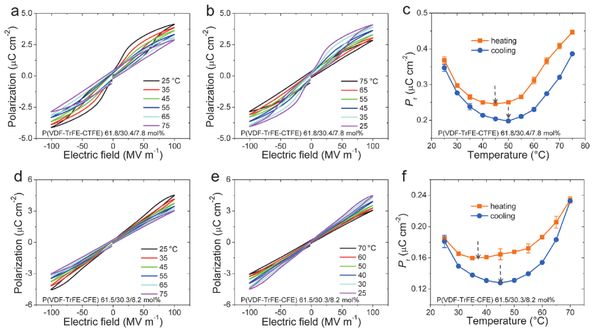Categories
In today's highly sophisticated electronic devices, the stability and accuracy of the reference voltage is critical to the performance of the entire system. However, an often overlooked issue - thermal hysteresis of the reference voltage due to PCB design - is gradually attracting widespread attention from engineers.
Overview of the reference voltage thermal hysteresis phenomenon
Reference voltage thermal hysteresis, in simple terms, is the delay or deviation between the reference voltage output and what is expected due to temperature variations on a PCB board. In high-precision electronic systems, this thermal hysteresis may lead to increased system measurement errors, performance degradation, or even cause system failures.
Under normal circumstances, the reference voltage should remain stable and provide an accurate reference for each circuit in the system. However, when the PCB is not properly designed, the output of the reference voltage will lag during temperature changes. For example, when the system starts up, as the PCB temperature gradually rises, the reference voltage cannot keep up with the temperature change in time to reach a stable value; or when the temperature is lowered, the reference voltage does not quickly return to the normal level.

PCB design causes thermal hysteresis
In PCB design, if the distance between the reference voltage chip and other heat-generating components (such as high-power resistors, power amplifiers, etc.) is too close, the heat generated by the heat-generating components will be rapidly transferred to the reference voltage chip, resulting in unstable operating temperatures. As the performance of semiconductor devices changes with temperature, the output voltage of the reference voltage chip may also deviate as a result, resulting in thermal hysteresis.· Unreasonable layout of components
In addition, the arrangement of the components may also affect heat transfer and heat dissipation. For example, if the components are arranged too densely, poor air circulation will hinder heat dissipation, causing the temperature gradient around the reference voltage chip to increase, further aggravating the thermal hysteresis problem.
· Improper layout
The wiring on the PCB creates a certain amount of resistance and inductance, which generates power consumption and is converted into heat when current passes through. If the reference voltage supply line is too long or too thin, the resistance will increase and the power consumption will increase, which will lead to a rise in local temperature. In addition, irrational wiring may also cause electromagnetic interference, affecting the stability of the reference voltage, which in turn aggravates the thermal hysteresis phenomenon.
For example, in multi-layer PCB board design, if the layout of the power and ground layers is unreasonable, it will lead to an excessively long power return path, increasing resistance and inductance and generating more heat. At the same time, unreasonable wiring may also expose the reference voltage signal to electromagnetic interference, resulting in fluctuations in the output voltage.
· Lack of effective thermal management measures
When designing PCBs, if thermal management issues are not fully considered, such as not setting reasonable heat dissipation channels, ventilation holes or heat sinks, it will lead to heat accumulation on the PCB board and uneven temperature distribution. The performance of the reference voltage chip will be affected when it is in a high-temperature environment, resulting in thermal hysteresis.
For example, for some high power consumption PCB designs, if they rely only on natural heat dissipation, the temperature on the PCB board will rise rapidly after a long period of operation, and the output voltage of the reference voltage chip will deviate greatly with the temperature change.
Impact of thermal hysteresis on system performance
Reference voltage thermal hysteresis affects the performance of electronic systems in many ways.
· In terms of measurement accuracy, an unstable reference voltage can lead to erroneous measurement results. For example, in high-precision analogue-to-digital converters (ADCs), thermal hysteresis of the reference voltage can lead to deviations in the conversion results, affecting measurement accuracy.
· In terms of system stability and reliability,thermal hysteresis can make the system unstable during temperature changes. In some temperature-sensitive industrial control systems, reference voltage thermal hysteresis can cause the control signal to fluctuate, affecting the normal operation of the system and even causing malfunctions.
Strategies for solving PCB designs that cause thermal hysteresis problems
1. Optimise component layout
Rationally plan the location of the reference voltage chip and other heat generating components, keep away from high power consumption components and set up a heat dissipation isolation zone in the middle. At the same time, optimise the arrangement of components to ensure smooth air circulation and improve heat dissipation efficiency. For example, using a layered layout, the heat and reference voltage chips are placed on both sides of the PCB board, and heat conduction is reduced through reasonable wiring and ground plane design.
2. Improve wiring design
When designing the wiring, reduce the resistance and inductance of the power supply line, use wider power lines and ground lines, and shorten the reference voltage supply path. Avoid wiring to form loops to reduce electromagnetic interference. Multi-layer PCB boards should be reasonably designed power and ground layer layout to ensure that the power return path is the shortest. Shielded lines can also be used to reduce external interference.
3. Strengthen thermal management
Give full consideration to thermal management, set up cooling channels, ventilation holes or heat sinks, high power consumption design can also use fans, liquid cooling and other active cooling methods. Set up a heat sink or thermal pad around the reference voltage chip, and dissipate the heat through the heat dissipation channel. At the same time, reasonably control the operating temperature of the PCB board to avoid high temperatures for a long time.
Welcome to consult our sales engineer with BOM list and Gerber file